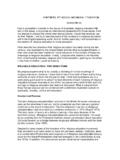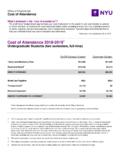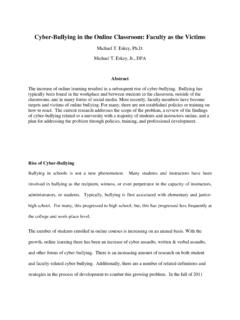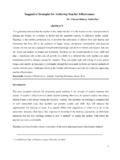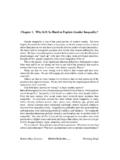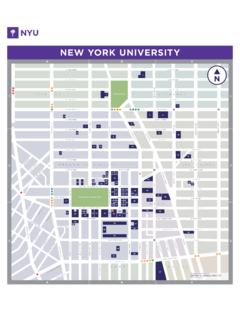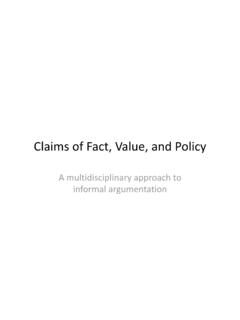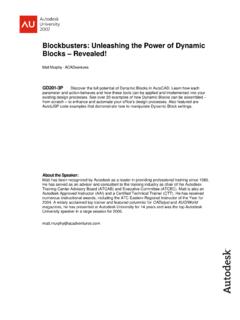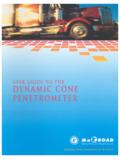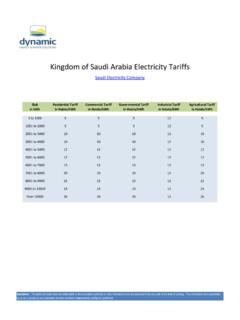Transcription of The Neural Basis of the Dynamic Unconscious - …
1 The Neural Basis of the Dynamic UnconsciousHeather A. Berlin (New York)A great deal of complex cognitive processing occurs at the Unconscious level and affects how humans behave, think, and feel. Sci-entists are only now beginning to understand how this occurs on the Neural level. Understanding the Neural Basis of consciousness requires an account of the Neural mechanisms that underlie both conscious and Unconscious thought, and their Dynamic interac-tion. For example, how do conscious impulses, thoughts, or desires become Unconscious ( , repression) or, conversely, how do Unconscious impulses, desires, or motives become conscious ( , Freudian slips)?
2 Research taking advantage of advances in technologies, like functional magnetic resonance imaging, has led to a revival and re-conceptualization of some of the key concepts of psychoanalytic theory, but steps toward understanding their Neural Basis have only just commenced. According to psychoanalytic theory, Unconscious Dynamic processes defensively remove anxiety-provoking thoughts and impulses from consciousness in re-sponse to one s conflicting attitudes. The processes that keep unwanted thoughts from entering consciousness include repression, suppression, and dissociation.
3 In this literature review, studies from psychology and cognitive neuroscience in both healthy and patient populations that are beginning to elucidate the Neural Basis of these phenomena are discussed and organized within a con-ceptual framework. Further studies in this emerging field at the intersection of psychoanalytic theory and neuroscience are : Unconscious ; psychodynamic; repression; suppression; dissociation; neuralHeather A. Berlin: Department of Psychiatry, Mount Sinai School of Medicine, New York, to: Heather A. Berlin, Department of Psychiatry, Mount Sinai School of Medicine, One Gustave L.
4 Levy Place, Box 1230, New York, NY 10029, (email: Nothing is so difficult as not deceiving oneself. Ludwig Wittgenstein [1889 1951]Cognitive Unconscious processingThe intricate relationship between conscious and un-conscious processes is one of the many mysteries that continue to perplex our understanding of How much of our subjective conscious experience is influenced by Unconscious processes? There is a distinction, however, between Unconscious processes, which neuroscience is more likely to explore, and the Unconscious mind with its psychoanalytic contents (Kihlstrom, 1994, 1999; Macmillan, 1996; Westen, 1998a).)
5 Early psychodynamic theorists attempted to explain phenomena observed in the clinic, but lat-er cognitive scientists used computational models of the mind to explain empirical data. By using models based mostly on nonclinical data, cognitive science (in branches like neuroscience, cognitive psychology, neu-ral modeling, and Neural linguistics) departed from the older psychoanalytic theories, heading into new areas involving Neural processes (Ekstrom, 2004). For ex-ample, recent imaging, psychophysical, and neuropsy-chological findings suggest that Unconscious processes take place hundreds of milliseconds before conscious is largely accepted that lower levels of process-ing ( , motor reflexes, sensory analysis) can operate outside of perceptual awareness (implicitly) ( , Cas-tiello, Paulignan, & Jeannerod, 1991).
6 And although the existence of nonconscious computations at higher levels ( , semantic or inferential processing) has been controversial (Dixon, 1971; Eriksen, 1960; Green-wald, 1992; Holender, 1986), a range of empirical find-1 The terms consciousness and awareness (or conscious and aware) are used in this article synonymously and anything outside of awareness/con-sciousness is referred to as nonconscious (a term used more in cognitive psychology that emphasizes the descriptive and empirical nature of the phe-nomenon) or Unconscious (traditionally used in the psychoanalytic tradition to reflect more Dynamic Unconscious processes).
7 Neuropsychoanalysis, 2011, 13 (1) 5 2011 The International Neuropsychoanalysis Society Heather A. Berlinings on the Unconscious over the last several decades has led most cognitive neuroscientists today to believe that mental activity can occur outside of conscious awareness (Hassin, Uleman, & Bargh, 2005). Some have argued that all information processing can, at least in principle, operate without conscious experi-ence, and that consciousness (C) may thus be of a dif-ferent nature (Chalmers, 1996).
8 This view goes along with the hypothesis that nonconscious processes can achieve the highest levels of representation (Marcel, 1983). A large amount of complex cognitive process-ing appears to occur at the Unconscious level in both healthy and psychiatric and neurological populations. For example, evidence from patients with blindsight (Goebel, Muckli, Zanella, Singer, & Stoerig, 2001; Weiskrantz, 1986), prosopagnosia (Renault, Signoret, Debruille, Breton, & Bolgert, 1989), implicit aware-ness in hemineglect (Cappelletti & Cipolotti, 2006; Marshall & Halligan, 1988; Vuilleumier et al.)
9 , 2002), nondeclarative learning even in amnesia (Knowlton, Mangels, & Squire, 1996; Knowlton, Squire & Gluck, 1994; Turnbull & Evans, 2006), and the split-brain syndrome (Gazzaniga, 1995) supports the idea that un-consciously processed stimuli can activate high-level cortical perceptionKouider and Dehaene (2007) suggest that in order to reach C, a stimulus must have sufficient strength (which can be hindered by masking)2 and receive top-down attention (which can be thwarted by draw-ing attention to another task or stimulus).
10 Subliminal perception (aka perception without awareness) occurs when stimuli are processed by our sensory systems, but do not reach the threshold of entering into C be-cause they are presented below the limen for conscious perception. This is usually demonstrated by presenting stimuli that are masked or presented in a subtle form or too briefly to be consciously perceived, but are suf-ficient to prime or bias a subject s performance in tasks like lexical decision-making. Subliminal perception studies have shown that Unconscious processing can influence awareness.
